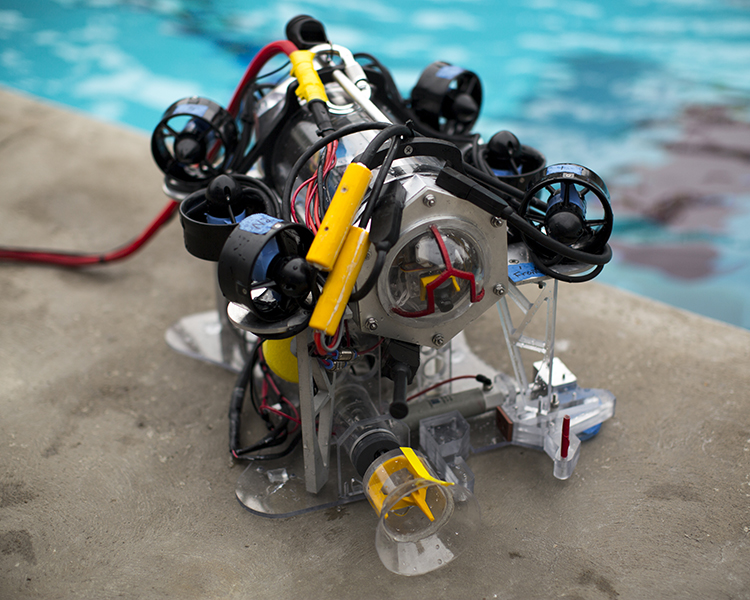Testing under a time limit
’Twas the night before the M.A.T.E competition, or the Marine Advanced Technology Education competition. The Jesuit High School robotics team was testing Lazareth, Jesuit’s underwater robot, in the hotel pool. But there was a problem with the thruster system. By midnight, the team was up and trying out Lazareth in the hotel bathtub instead to fix the thrusters. And after all that hard work, the robotics team was able to get the thrusters system running just on time.
Lazareth, an underwater robot created by the Jesuit robotics team, placed seventh out of 25 teams across the nation in the 2017 M.A.T.E. competition. Hayden Kaufman ’19 was one of the members of the Jesuit robotics team who participated at M.A.T.E. As an electronics supervisor, he looked over the production of circuit boards and other electronics.
“We made our own circuit boards,” said Hayden. “But that plan did not work. So the robotics team went to Plan B, which was use old arduino boards, . . . circuit boards that make the brain of the electronics we see today.”
With the arduino boards or base program boards, they were able to code pneumatics, which allowed Lazareth to move by using pressurized air to push out of the thrusters like a shaken soda bottle. But that was not the only advancement; as with pneumatics, Lazareth was even lighter in weight.
“What also protected the electronics was a watertight seal container made out of two-inch thick acrylic, which made it lighter than ROVs [remote operated vehicle] used in past years,” said Hayden. “So the lighter robot helps moving with the pneumatics and thrusters.”
Lazareth was made up of different tools. Some of them were a dome to allow the camera to see in a 360° view all around, a claw for grabbing things that were assigned for the robot to pick up in certain tasks, a vacuum, and the thrusters.
Even though Jesuit robotics team got seventh out of 25 teams, they learned techniques such as using pneumatics and making their own circuit boards. These techniques will help for Mako, which is this year’s ROV; it could be the best underwater robot Jesuit made and perhaps could even win the 2018 M.A.T.E. competition.


